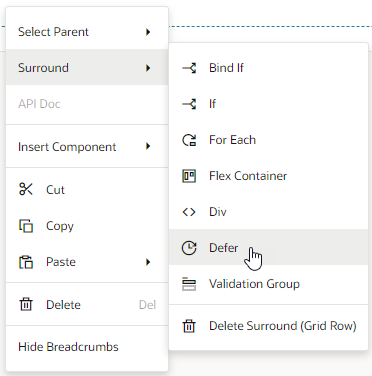Defer Rendering of a Fragment's Content
By default, a fragment loads immediately when its page renders, but you can change this behavior so a page renders faster initially. For example, say an Incidents page has three tabs—List, Map, and Schedule—all defined in separate fragments. When the Incidents page needs only the contents of the List fragment to display, you can wrap the Map and Schedule fragments in an oj-defer element to delay the rendering of those fragments at runtime.
What triggers hidden fragments to render is configurable. It could be a button click, selecting a tab, opening a dialog, or an oj-if that uses conditions to display content. In these cases, UI events or application state determines when the fragment is loaded. In the Incidents example, the hidden Map or Schedule fragment renders on the page only when a user clicks either tab to view its content:
Description of the illustration fragment-incidents.png
You can also delay a fragment from rendering until it is "visible". Say, your page has a lot of content that encourages users to scroll. Rather than load the entire page, including sections hidden from the viewport, you might want to load some sections only when the user brings them into view. In this case, you can section your page into different fragments, then add a trigger to render a fragment only when it comes into view.
To set up a fragment for deferred rendering:
